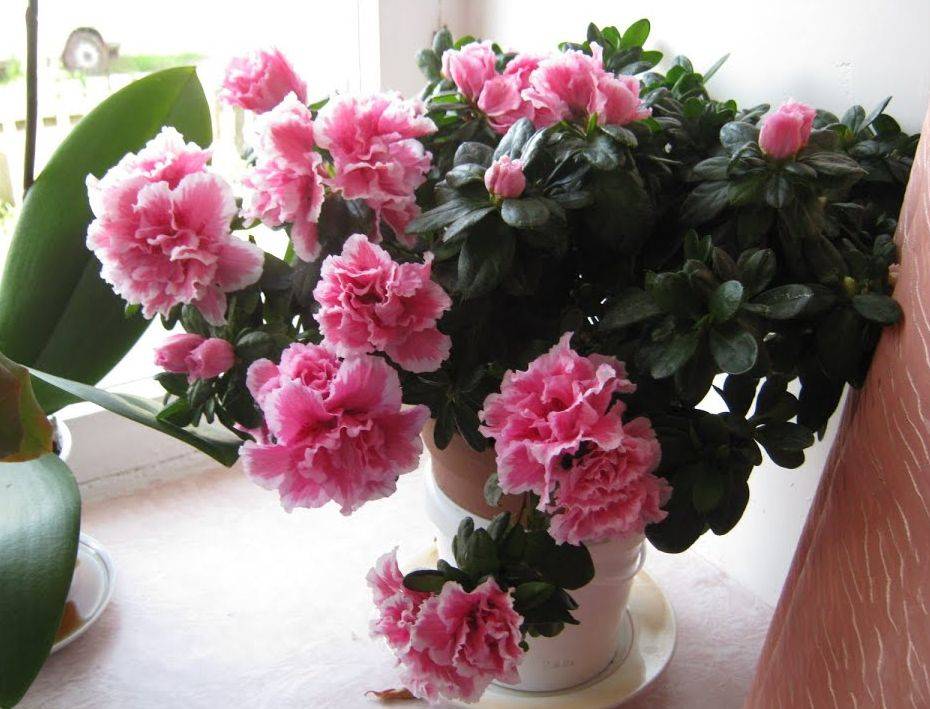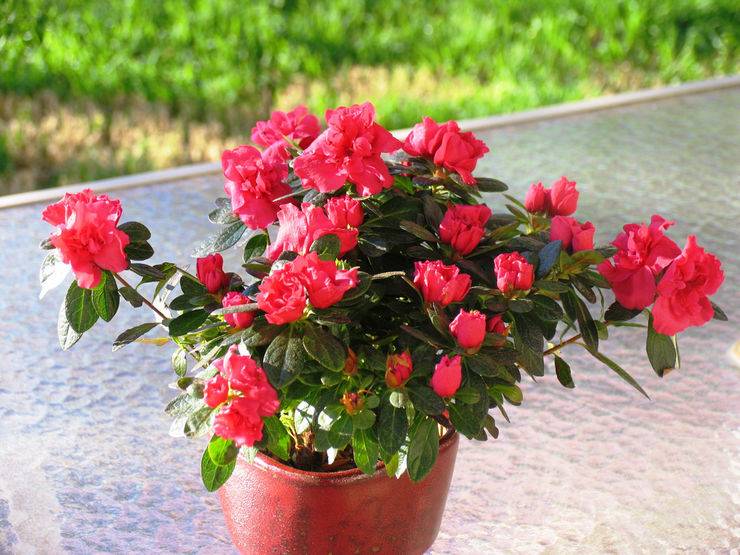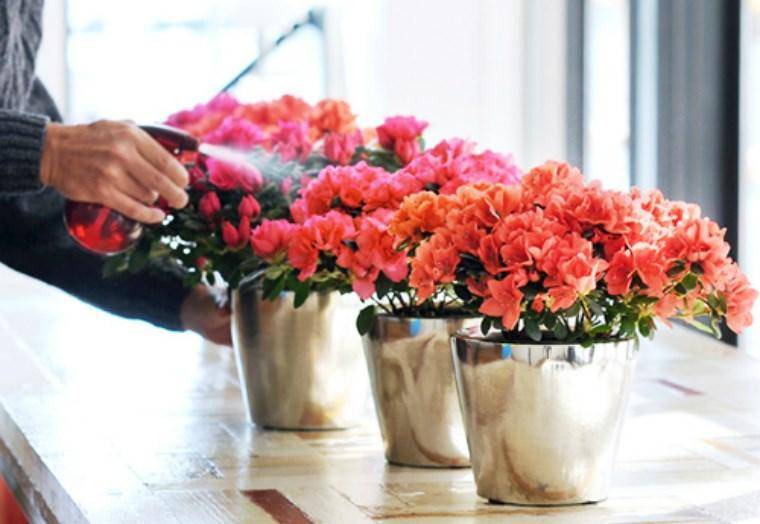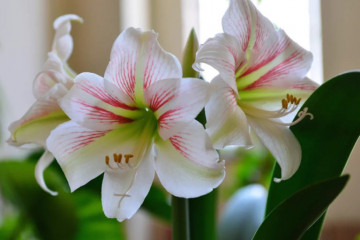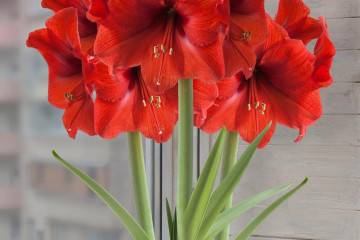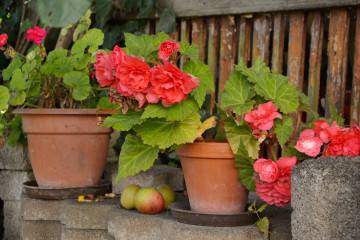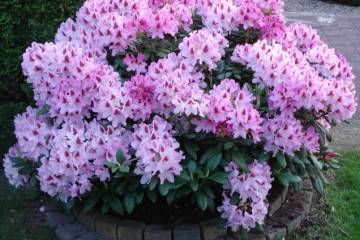Azalea - home care after purchase
Content:
Azalea (azalea) belongs to the Heather family. This very beautiful flower is one of the varieties of rhododendron. Azalea requires a lot of attention, only then will it delight with lush flowering. If the flower was purchased in a store, then it needs to be properly cared for, otherwise the beautiful buds will wither, the bushes will shed their leaves and die. After the azalea has appeared in the house, home care after purchase must be competent.
Keeping azaleas in the store
Azalea for sale is bred in special nurseries where plant care is minimized. Their root system is poorly developed. The bushes are prepared for flowering in an artificial way. A small amount of peat mixture is added to the pots that are intended for transportation. Then all this is processed with a special chemical composition. Such substances inhibit the development of the azalea, it is in a state of artificial sleep. Fertilizer is introduced into the soil to maintain the freshness of the buds for 2-3 months.
The earth in which the flower was in the store tends to be compressed. It adheres firmly to the roots, but there are no nutrients in such a soil. Flowering occurs due to chemical stimulants that are used in nurseries. When forcing, the development of buds is activated, but at the same time the roots and green mass are inhibited.
What to do first after buying a flower
After the purchase, in new conditions, the plant needs to create a good microclimate so that it feels comfortable, and there is an incentive to throw out the buds. A close inspection of the plant reveals mold, fungi, possible root problems and soil conditions.
Most likely, azaleas will need to be transplanted into good soil with the removal of damaged and diseased areas. Timely transplantation is necessary for the good development of the root system. This procedure must be completed approximately 10-15 days after purchase. During this period, the plant adapts to life in a new environment.
Young plants need to be transplanted annually; more mature plants are recommended to be subjected to this procedure once every two years. The transplant is carried out after the end of the flowering period.
Blooming azalea cannot be transplanted, since during this period it spends all its power on the formation of buds. The transplanting process is very stressful for the plant. During this time, the likelihood of the azalea shedding leaves and buds increases. It takes a lot of effort to get the plant out of this state. But even in this case, it is not always possible to save the bush. Most likely, most of the blossoming flowers will need to be removed before transplanting.
How to transplant azalea after purchase
When transplanting, special attention should be paid to the choice of a pot. It should be about five centimeters higher than the previous one. You can choose both plastic and clay containers.
Soil preparation
The most suitable soil is a special mixture purchased from a store. You need to add a baking powder (sphagnum or river sand) to it.
Preparing the soil for an azalea yourself is not easy, but if you try, you can do it. An example of such a mix: take one part of peat, two parts of rotted needles and add a little river sand there.
Transfer
The step-by-step transplantation process consists of the following stages:
- Remove the azalea from the pot.
- After examining the root system, you can see a dense clod of earth with many small roots. A large bush must be divided, this is done by cutting the earthen coma into pieces. Each layer needs its own pot
- Cut the ground at the bottom and sides, make cuts around the entire circumference.
- Make a solution of a special mixture of Kornevin and lower the roots for half an hour in a container with this liquid.
- Line the bottom of the pot with drainage. Next, add a layer of river sand and moss.
- Sprinkle with Trichodermine, necessary to prevent fungal and putrefactive bacteria.
- Spread a layer of potting mix evenly on the surface of the pot.
- Remove the azalea from the water and wait for the liquid to drain.
- Place the bush in the center of the pot.
- Gently fill the soil without touching the root collar of the bush. You cannot deeply deepen it.
- Lightly compact the soil around the root.
At the end of the transplant, lightly moisten the substrate with the solution remaining from soaking the root system.
Azalea flower: how to care for it at home
After transplanting, the flower is severely weakened. For strengthening, treatment with growth stimulants is carried out. Plants need to be carefully cared for. Under favorable conditions, it should recover successfully.
First of all, you need to find a comfortable place where the azaleas will be cozy. It should be warm and light. Direct sunlight is not allowed. Also, the flower should be located away from heating appliances. It must be remembered that these plants do not like drafts. The most suitable windows should face west or north.
Illumination
If there is a lack of light, it is recommended to use artificial lighting. The first time after transplanting, the bushes need to be slightly shaded. Without full protection, the pots can be left on after 2 weeks. In warm and dry weather, it is allowed to take the azalea to the balcony, but at the same time it is necessary to provide a little shade.
Humidity
Plants love moist air. If the room is very dry, then expanded clay is added to the pallet, where water should be regularly poured. To prevent the leaves from drying out, they are sprayed.
Temperature regime
During the dormant period (from about October to December), the temperature in the room where the azalea is located should be 6-8 ° C. These conditions are ideal for bud formation and subsequent flowering. When the first buds appear, it is recommended to increase the temperature to 17 ° C.
The minimum and maximum temperature must be maintained. In winter, a minimum temperature of about 5 ° C should be maintained, in summer this figure should not exceed 18 ° C.
Humidity
Regular watering should be observed: at least 2 or 3 times a week. In dry air, the bushes need to be watered more often. The water must be sold through a pallet. Then you need to wait 15 minutes, then drain the excess. It is important to ensure that the ground is completely saturated with moisture.
Water for irrigation should be at room temperature. The liquid must be settled within two days. Lemon juice is added in small amounts to acidify the soil.
Fertilization
Do not fertilize immediately after transplanting.Failure to observe this rule can lead to burning of the weakened roots. The first time it is possible to fertilize after transplantation is only one to two months after the azalea has been placed in its permanent place.
At the end of the recovery period, nutrient mixtures should be applied once a week. This condition must be met in the spring and summer. In the fall in winter, fertilize is needed less often, about once for 14 days. In winter, feeding is completely stopped.
Special formulations are sold to fertilize plants. During the period of bud formation, superphosphate is used for fertilization.
Caring for an azalea after purchase is a rather complicated process. Without certain knowledge, you can harm plants. But if everything is done correctly, the acclimatization process goes well. The root system will suffer minimal losses. After two months, the bushes are completely restored and soon they can bloom and grow luxuriantly.
